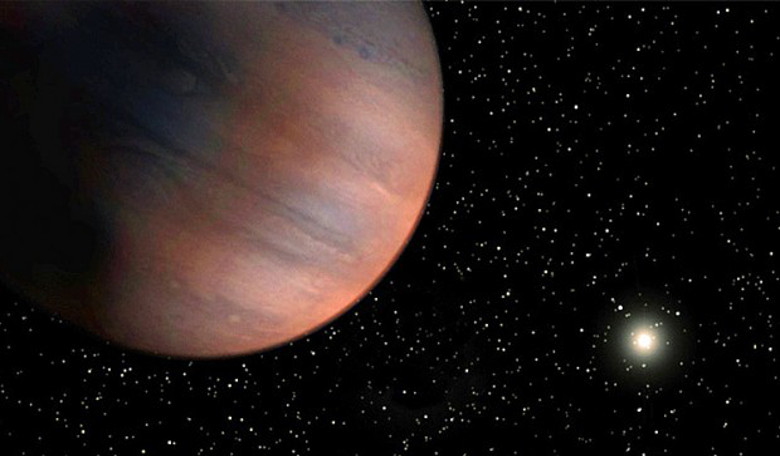Using the Keck telescope in Hawaii, astronomers have found a super-Jupiter mass planet orbiting a star that is only a third the size of our Sun and is likely located in the Galactic bulge.
The massive planet, known as MOA-2016-BLG-227Lb, was discovered by the Microlensing Observations in Astrophysics (MOA) collaboration who used gravitational microlensing, a method which replies on light being ‘bent’ by massive objects in between an observer and a background source of light, to find the planet.
Microlensing is the only known method capable of discovering planets at great distances from the Earth. Normally this technique is suited to finding low-mass planets orbiting beyond the snowline around relatively faint host stars, such as brown dwarfs or M dwarfs.
Nonetheless, microlensing is dependent on rare and random events like the passing of one star precisely in front of another, as seen from Earth, making this method of finding planets both difficult and unpredictable.
Finding such a massive planet orbiting a cool dwarf star is also predicted to be rare by the core accretion theory of planet formation, but as light from the event was also covered by the Wise Observatory, the UKIRT 3.8m telescope on Mauna Kea, Hawaii, the Canada France Hawaii Telescope (CFHT), and the VST survey telescope located at at ESO’s Paranal Observatory, its discovery is unlikely to be invalidated.
All telescopes were observing the event as part of the “Campaign 9” of the Kepler 2 mission, also known as the K2C9 program, which involves the recovered Kepler space telescope working in conjunction with ground-based observatories to find possible events suitable for observations on larger telescopes.
The host star around which MOA-2016-BLG-227Lb orbits is classed as an M or K-dwarf star – for comparison our Sun is a G type star and is a main sequence yellow dwarf star.
Stars are classified by their spectra (the elements that they absorb) and their temperature and are labelled in order of decreasing temperature, by a seemingly random order of letters; O, B, A, F, G, K, and M. While O and B stars are bright and very hot, they are also uncommon; M stars on the other hand are plentiful but a lot cooler. The descriptive letters are historical and refer back to long-obsolete ideas about stellar evolution, however the terminology remains to this day.
For more information on this research, see; here (opens in a new window).











